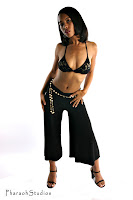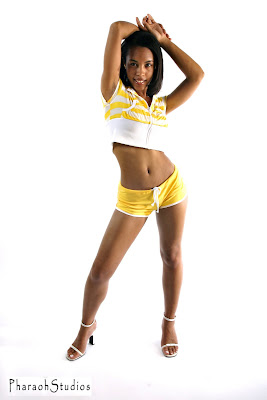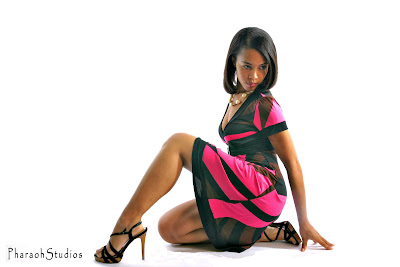
Shooting with an all-white background is an excellent way to experiment with colors and outfits. No matter what, you'll stand out. The key to shooting with an all-white background is to know how to use your space. There isn't anything in the background to play off of and unless you have a prop, you're pretty much on your own.
When it comes to posing in front of a high key white background, it's best to exaggerate your poses. Start off with some simple practice poses and work your way up. This is the perfect environment for playing with poses that will cause your image to jump out at the viewer.
Try to avoid plain, boring poses and use your arms to give shape to your pose. Creating great lines is key when shooting with a white background. What I mean by this is that the intensity of the high key white background will automatically create an outline of your body. The best poses are those that show long, slendar and graceful lines.
Example of a pose that creates great lines:

Also pay attention to color. This is where you can make the most of vivid, bright and contrasting hues. Think about patterns and choose styles and outfits that really flatter your shape because against the high key white background, every little detail will show up. Sometimes depending on the type of outfit you wear, you can end up creating a really awesome image.
Take a look at how the stripes in my dress really bring a lot of flavor and movement to the photo, even though i'm sitting down in a stationary position:

Shooting in high key white is a great way to practice posing and owning the camera when you don't have anything else to fall back on. Also remember that when working with this type of background, you will be surrounded by various lights so also be mindful of the shadows that can be created.
Try not to pose in a way where your arm or hand will cast any unsightly shadows on your face. While Photoshop is a big help, it can't make miracles and even one faulty shadow can ruin the effect.
Comments